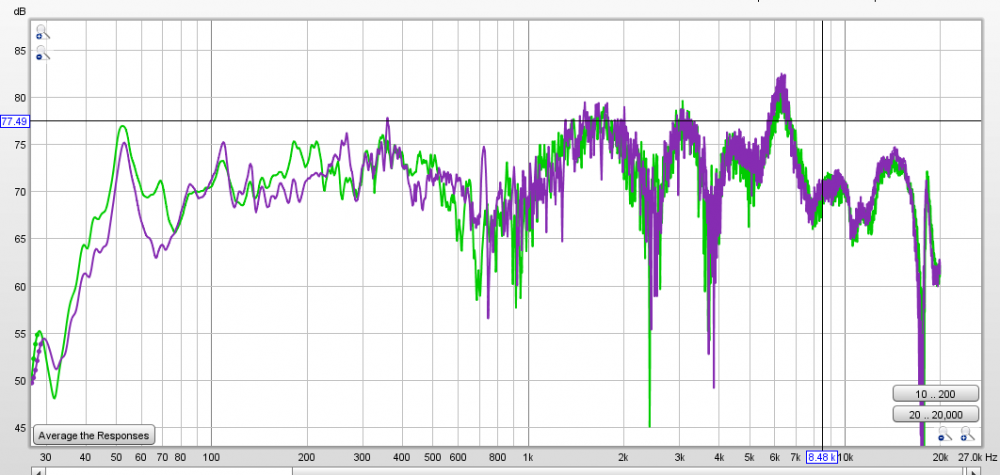Site Links
Howdy, Stranger!
It looks like you're new here. If you want to get involved, click one of these buttons!
Quick Links
Categories
Please review the site Rules, Terms of Service, and Privacy Policy at your convenience. Rules, TOS, Privacy
Get familiar with the reaction system: Introducing the Reaction System
When is a notch not a notch?
So I never ran across this before. IMO, this latest PicoNeo build sounds a bit hot in the treble so I took some close-up measurements and got this.

Never had to notch something without a crossover before and when I tried to use a shunt notch for the 6k peak, it did absolutely nothing to the freq response. Had to use a series notch. Also having a heck of a time trying to tame that 6k peak and lower the 1.7k hump just a tad.
So why does a shunt notch have no affect?
Comments
I'm away from my pc, or I'd run through what is going on.
I would personally throw a BSC shelving filter on there, and see what happens.
Interesting. I have been working on a project I hope can ultimately be published as the Neons. This is my measurement of the NS3 (or ND90-8) on about a 4.5" wide baffle. My NS3 that was measured is about 10 years old.
Based on this, I thought I could let the NS3 run up pretty high without a notch. A builder using newer NS3's mentioned a large peak around 6.5 kHz, which your measurements also seem to show. It's big enough that some kind of notch is probably needed. If I finalize the Neon design, it will have to account for the response of the newer NS3/ND90's. I guess the good thing is I need to switch tweeters and will probably wind up with something that can handle a 2.5 - 3 kHz crossover point.
As to your question, I messed around a little in xsim and think I understand.
When all you have is the driver and the shunt notch in the circuit with the amplifier, the impedance drops like a rock at the notch tuning frequency. At that point, the circuit is sending the same current to the driver as it would if there was no notch, but is drawing more current from the amplifier to also send current through the shunt.
When you have other components in the circuit, they are influencing the overall system impedance, which allows the notch to actually shunt current away from the driver at the notch tuning frequency and reduce its output.
This is also why shunt notches are better for controlling resonances outside of the primary frequency range of the driver they are connected to.
Sehlin Sound Solutions
@ScottS Aha. Makes sense.
Was able to cut the 6.5k hump about 5db with two components already on hand. Haven't had time to listen yet. Also wondering if the broad hump around 1.7k might need dropped a tad.
Measured at ~12".
Looks like Ani built and measured these back in 2015 - and got the 6.5K peak.
http://techtalk.parts-express.com/forum/tech-talk-forum/58112-any-measurements-for-the-pico-neos-wolfs-pc
I still have both those pairs!!!
What you guys think?
S2 black - no filter
S2 blue- 2 parts, knocked that 6.3k spike down, too much?
S3 orange - 5 parts, can move the ~1.5 hump up/down as needed.
Graph in 2db steps.
@ScottS How far away was the mic when taking that measurement? I'm wondering if some of those peaks/valleys may flatten given some distance, although, as a computer monitor, they will probably never be more than about 2' from the listener.
My measurement was at 0.5 m, but with a short gate time (about 5 msec) to take out the peaks/valleys due to reflections.
Sehlin Sound Solutions